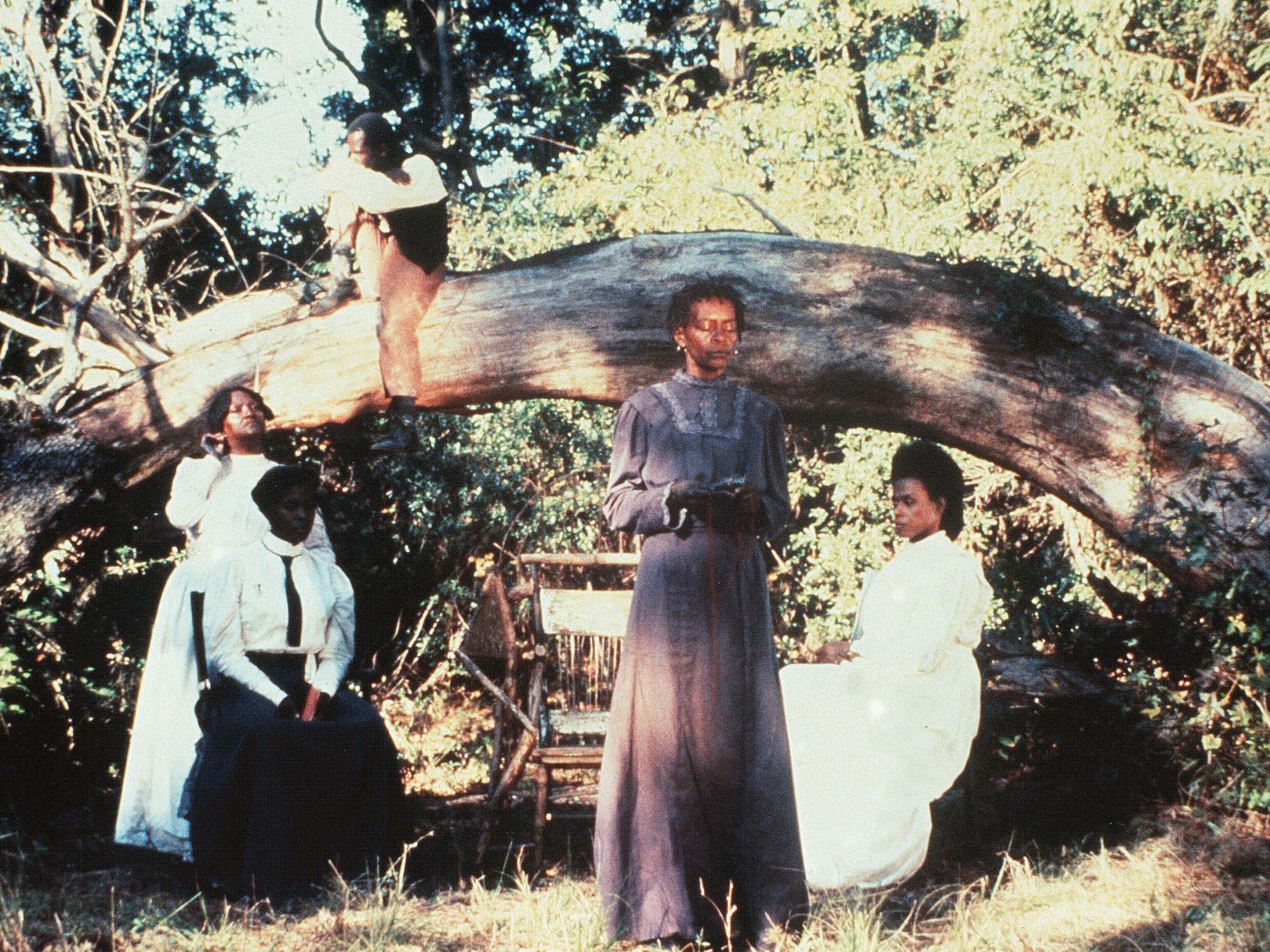The Indy Film Club: How Daughters of the Dust influenced Beyoncé’s Lemonade
Julie Dash’s debut was the first film directed by a black woman to receive a general theatrical release in the US. Clarisse Loughrey explores its legacy

In Beyoncé’s Lemonade, her historic 2016 visual album, a portrait of black femininity is presented as a series of romantic vignettes. Black women in long, white dresses – embellished with lace and high collars – sit perched in mossy trees, engaged in quiet communion. Processions of black women make their way across untouched beaches, towards the unspoken promise of rebirth and regeneration beneath the ocean’s waves. There is immense beauty in how still and serene these moments are, as the women sit in communication with past traditions and the ancient roots of nature.
Critics were quick to point out that these tableaux are drawn directly from 1991’s Daughters of the Dust, writer-director Julie Dash’s masterful, often overlooked debut film. Set in 1902, it invokes the Gullah culture of the Sea Islands, which sit off the coast of the southeastern United States. It belongs to the descendants of enslaved people transported from central and western Africa, brought to the islands to work the rice, cotton and indigo plantations. Cut off from the mainland, the Gullah people were better able to preserve their African heritage and developed a creole language of their own, also called Gullah. Dash was inspired by experiences of her own father, whose family migrated from the Sea Islands to New York City in the early 20th century.
Daughters of the Dust focuses on the fictional Peazant family, who face a crucial moment in their own history – they’ve decided to leave the islands for the industrialised North, hooked on the promise of economic prosperity and cultural modernity. Some, however, are determined to stay behind. Rifts begin to form: Haagar (Kaycee Moore) heads up the leaving party, while her daughter Iona (Bahni Turpin) longs to stay behind with her secret love, a Cherokee boy named St Julien Lastchild (M Cochise Anderson).
Subscribe to Independent Premium to bookmark this article
Want to bookmark your favourite articles and stories to read or reference later? Start your Independent Premium subscription today.
Join our commenting forum
Join thought-provoking conversations, follow other Independent readers and see their replies